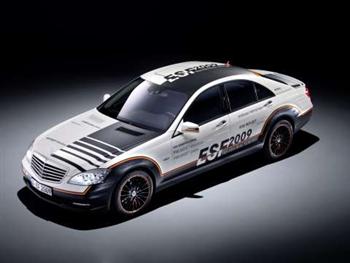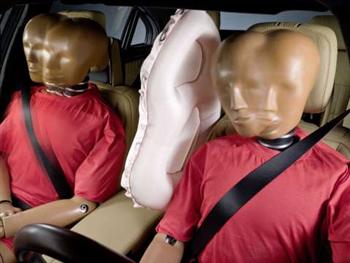|
Home | News | Road Tests | ||||||||||||
Mercedes-Benz Pioneers New Safety Technologies: The 2009 ESF Experimental Safety Vehicle
Home > News > Mercedes-Benz 17th June, 2009
The year 2009 is a period in which Mercedes-Benz celebrates several anniversaries in the safety field: in August 1939 the automotive safety pioneer Béla Barényi started his work at Mercedes-Benz in Sindelfingen. Regarded as the father of modern car safety, he invented a multitude of pioneering safety features. One example is the principle of the crumple zone, a trailblazing innovation which entered series production at Mercedes-Benz 50 years ago in 1959. With the help of its in-house accident research function, founded in 1969, Mercedes engineers in the following years have developed several groundbreaking innovations in passenger car safety. In this anniversary year, Mercedes-Benz is using the ESF 2009 research vehicle to reveal what its safety specialists are currently working on – with a time horizon that often extends well into the future. The ESF 2009 is the first Experimental Safety Vehicle to be built by Mercedes-Benz since 1974. Like its historic predecessors, it illustrates trailblazing innovations in the field of safety and makes the progress achieved clearly visible. These amazing but by no means crazy ideas include inflatable metallic sections which give more stability to structural components within fractions of a second, as well as the so-called "Braking Bag". This airbag, housed within the vehicle’s floor, is deployed when a crash is deemed to be unavoidable, and uses a friction coating to support the vehicle against the road surface. The ESF 2009 premiered on Monday, 15th June 2009, at the Enhanced Safety of Vehicles (ESV) Conference in Stuttgart, Germany. "Safety is a central element of the Mercedes-Benz brand. In this respect we have been setting the pace in the market for almost 70 years for the benefit of our customers and for road users in general. The ESF 2009 shows that we still have plenty of ideas and the absolute will to lead the automobile industry in this field even in future", says Dr. Dieter Zetsche, Chairman of Daimler AG and CEO of Mercedes-Benz Cars. The ESF 2009 was developed and built completely in the Mercedes-Benz test vehicle workshops in Sindelfingen. This safety research vehicle, based on the Mercedes S 400 HYBRID, features more than a dozen safety innovations, most of which are fully functioning in demonstration mode. "With the ESF 2009, we have chosen this particular time to clearly demonstrate the innovative strength of Daimler. Anybody examining the ESF 2009 in detail will recognise that more safety and improved energy efficiency are not necessarily a contradiction in terms. We want to make progress in both fields with new, trailblazing ideas", says Dr. Thomas Weber, the member of the Daimler Executive Board responsible for corporate research and development at Mercedes-Benz Cars. The following five innovations on the basis of the S 400 Hybrid are among the highlights of the ESF 2009:
Mercedes-Benz is also presenting an innovative PRE-SAFE Demonstrator at the 21st ESV Conference. For the first time this simulator uses a linear motor for this purpose, in order to accelerate the vehicle cabin to up to 16 km/h within a distance of four metres before the impact occurs. The linear drive system, which is similar to that used by the Transrapid train, is freely programmable and also works in the opposite direction. This enables various acceleration profiles and also a rear-end collision to be demonstrated. The special feature of this system is that the 'vehicle occupants' experience the effect of the PRE-SAFE® functions live, such as seat belt pre-tensioning, NECK-PRO, and the inflatable side bolsters of the seats. Mercedes-Benz is continuing a long standing tradition with the ESF 2009: for the ESV Safety Conferences held in 1971 to 1975, the safety experts in Stuttgart built more than 30 experimental vehicles and subjected them to crash tests to satisfy the visionary safety requirements of that time. Four of these ESFs (Experimental Safety Vehicles) were presented to the public, and many of the revolutionary ideas such as ABS or the airbag first entered series production at Mercedes-Benz. | ||||||||||||
More Mercedes-Benz News .....
here
About | Car Clubs | Home | News | Road Ramblings | Road Tests | Subscribe | Top Drive © 2009 All rights reserved. Next Car Pty. Ltd. |





